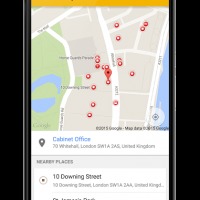Internet giant Google has recently introduced an open source Bluetooth LE beacon platform that will work with Android and other mobile OS. Officially called as Eddystone, this service allows devices to link a physical location with online data and tell other mobile devices what’s nearby and exactly where they are. These two are Eddystone’s two main features that aim to improve several location-based services.
With Eddystone, users are given better location and proximity experiences. According to Google, a context signal for devices will be provided for devices in the form of BLE or what we call Bluetooth low energy beacons with Eddystone. These features are made possible by new APIs that will be available not only for Android but also for iOS.
The Nearby API lets the apps locate nearby beacons and determine a similar environment or context. With this API, the app can know whether you are near a certain establishment. Meanwhile, the Proximity Beacon API can connect a physical location with any related data already stored in the cloud. Google already has similar and related location APIs but they will be upgrading and integrating them with this Proximity Beacon API.
This beacon technology is still relatively new but Google is determined to use it on different services that require location-awareness. The objective is to improve notifications and show more relevant information that will be useful to a user whenever he is in a particular location. Soon enough, this beacon will also work with Google Now so more related cards will show up at a certain time.
How is this Eddystone relevant to the common user? We may not immediately see the effects but Google wants this to be compatible with different hardware like those that feature low-power Bluetooth LE connectivity. In the future, Google may also offer certification programs for such products and services perhaps to standardize the technology.
Google is still working on the security part and the developers are calling them Ephemeral Identifiers or EIDs. These are IDs that can be decoded by authorized devices only. Google aims for each beacon to broadcast its identity to nearby Bluetooth Smart devices for easier and faster connectivity and location sharing. These beacons must be managed well to ensure context awareness is updated which will in turn improve any other location-based activities.
VIA: SlashGear
SOURCE: Google, Android Developers Blog














